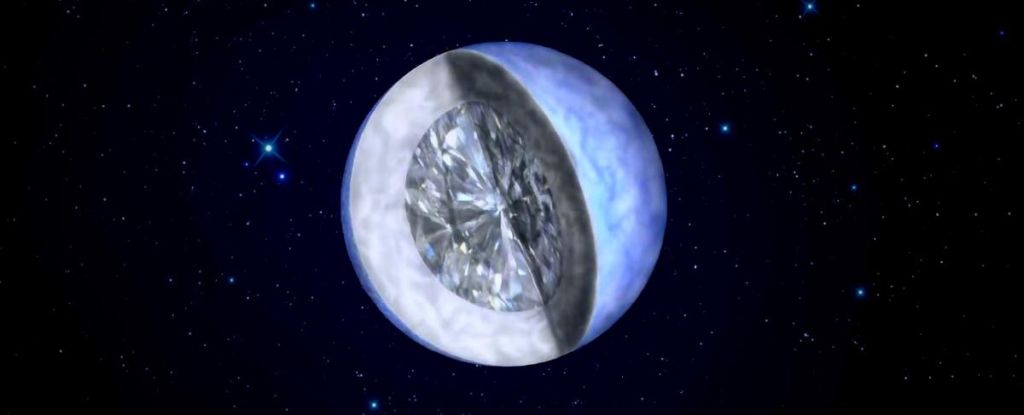Scientists have found a white dwarf near Earth, which is part of a system that includes three more stars. They assumed that the middle of this dead luminary had already begun to turn into a diamond.

New white dwarf
In a recent publication in the journal Monthly Notices of the Royal Astronomical Society, scientists report that a new white dwarf has been found relatively close to Earth. It is located 104 light-years away from us in the previously known HD 190412 system. The other three stars in it belong to the main sequence.
The star has a size comparable to the Earth or the Moon, but at the same time its mass is 1.4 times that of the sun. Once it was much larger, but it passed the stage of a red giant, dropped part of the mass, and now it shines more by inertia.
The fact that the star is in a multiple star system with the main sequence luminaries makes it possible to estimate the time for which this happened. However, scientists were most struck by this. After analyzing the ratio of temperature and mass of the star, they came to the conclusion that its interior was slowly turning into a diamond.
Diamond inside a white dwarf
In general, there is nothing new for scientists that white dwarfs should eventually turn into diamonds. Evolutionary models show that over time they should completely stop glowing and turn into black dwarfs. However, it takes about 1 quadrillion years to do this, so we will not see such objects for a long time.
However, as a result of this process, white dwarfs really should turn into diamonds. The carbon and oxygen atoms of which they are composed freely migrate and eventually occupy places in the nodes of the crystal lattice. And this causes a kind of plateau in the process of star extinction.
This also happened in the case of the HD 190412 system. Its age is estimated at 7.3 billion years. The white dwarf was formed from a red giant about 4.1 billion years ago, shortly after the Earth was formed.
However, the white dwarf is a little hotter than it should be. Scientists suspected that the reason for this was precisely crystallization, which slowed down the cooling process for at least 1 billion years. They are studying other similar systems to learn more about this phenomenon.
According to www.sciencealert.com
Follow us on Twitter to get the most interesting space news in time
https://twitter.com/ust_magazine

